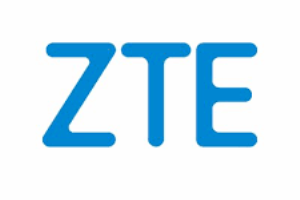ZTE releases NodeEngine 2.0 white paper, accelerating digital transformation of industries

Shenzhen, China. 25 March 2022 – ZTE Corporation, an international provider of telecommunications, enterprise and consumer technology solutions for the mobile internet, has released the NodeEngine 2.0 white paper, manifesting the company’s stride towards its research into industrial ToB applications in aim to accelerate the private network deployment of global operators and industrial partners.
NodeEngine is the industry’s station-based edge computing power engine. With one new board added into BBU, the NodeEngine solution sinks computing capability down to the BTS, achieving fully integration of computing power and networks. In this way, the 5G intelligent industrial networks can be constructed under the private network deployment requirements of application localisation, lightweight deployment and accurate performance.
The upgraded NodeEngine 2.0 solution proposes an innovative “1+N+ ∞” capability architecture:
- “1” represents one board. Only one additional computing board is needed to build a 5G private network, with the aim of realising radio access of terminals and local traffic distribution. At the same time, multiple NodeEngines are integrated in a cross-domain manner to form a computing power resource pool, achieving elastic expansion of computing power and supporting applications of higher performance and larger scale.
- “N” represents the N-dimensional value-added services. Based on NodeEngine 1.0, NodeEngine 2.0 improves service capabilities comprehensively, especially in?SLA intelligence and capability exposure. The solution provides wireless network with “industrial brain”, and accurate wireless capability guarantee for industrial applications.
- “∞” represents the expansion of rich industrial application scenarios. Through computing power opening, network strategy opening and service capability opening, NodeEngine 2.0 can realise the integration of cloud, network and services.
Thanks to the architecture of “1+N+ ∞,” NodeEngine2.0 has three highlights: simplification of service provisioning, service subscription and networking; intelligence of network connection guarantee; wireless network capability openness.
For instance, service provisioning contains five “ones”: “one board”, “one pair of optical fibres”, “one pair of IP addresses”, “one hour” and “one hop”. The “industrial brain” of wireless network enables subscription-free service for business cards. The deployment efficiency is increased by more than 10 times, and the SLA guarantee capability reaches 10ms @99.999% level. Through the opening of computing power resources, third-party applications can be deployed on demand. Through service capability openness such as positioning, service scenario can be expanded on demand to meet the differentiated and personalised application requirements of various industries.
With the development of 5G applications, industrial requirements for private networks are rising. How to provide more advanced services to better meet customers’ growing and differentiated requirements is the focus of private network construction in the new phase. After the launch of its NodeEngine 1.0 solution, ZTE has conducted over 80 projects in more than 10 industries globally to facilitate the rapid deployment and application of 5G private networks in industrial parks, mines, hospitals, venues and airports. With rich deployment experience, ZTE launches an innovative and evolving NodeEngine 2.0 solution.
In late 2021, ZTE conducted service verification of NodeEngine-based 5G intelligent factory overseas, and realised real-time remote transport control of industrial robots, with all data processing completed on the local server. This greatly improved reliability and time delay, and showed the powerful industrial solution capability of ZTE 5G network.
Comment on this article below or via Twitter @IoTGN
